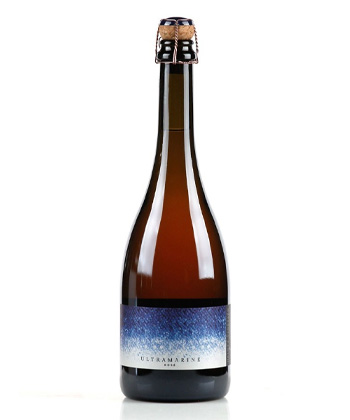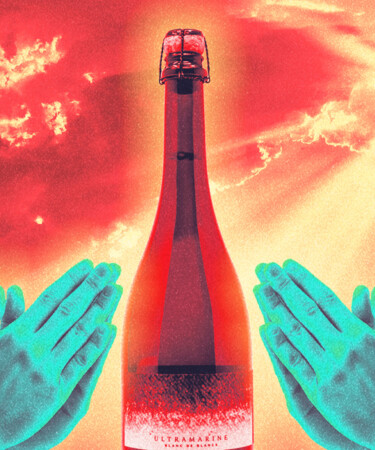Though California is home to several historic, beloved sparkling wine estates like Schramsberg and Domaine Carneros, U.S.-based brands never achieved the cult-level following of France’s top Champagne producers like Selosse or Salon. But in 2014 a distinct sparkling wine project emerged from California that immediately grabbed the attention of the wine industry. The dazzling bottle, called Ultramarine, sparked a fervor among somms and collectors only typically seen for the hottest grower Champagnes.
Co-founded by winemaker Michael Cruse in 2008, Ultramarine started as a small, backyard passion project between friends. At the time, the market was flooded with wines marketed as cool-climate, single-vineyard Pinot Noirs from AVAs like the Anderson Valley across Northern California. Cruse and his pals felt like the concept was growing tired and thought, “Why don’t we do a sparkling wine instead?”
After the first two years, Cruse wanted to level-up the quality of the production and approached legendary grape grower Charlie Heintz of the Heintz Vineyard — one of the most coveted sites for Pinot Noir and Chardonnay on the Sonoma Coast — in 2010.
To Cruse, this fruit changed the trajectory for Ultramarine, as he let the vineyard steer the way stylistically. “Charlie’s vineyard drove the style,” he says. “When we started, we didn’t really know what we were doing, but after working with Charlie we started partnering with more unique vineyard sites like the Michael Mara Vineyard and the Hirsch Vineyard.”
When the wine was first released in 2014, Cruse recalls there was immediate interest. Different from the stories behind some cult wines, like Screaming Eagle, which gained their fame by receiving high scores from reviewing publications, Ultramarine found its fan base through the ultra-nerdy wine crowd.

“The first place we ever sold it to locally was Chez Panisse,” Cruse says. “Then sommeliers like Pascaline Lepeltier started picking it up.” Soon, the bottle — with its distinct shape and metallic, salmon skin-like label design — was splashed across the social media feeds of popular sommeliers and enthusiasts alike, often flaunted in lineups of coveted French wines. In response, each vintage sold out immediately (as it still does), and a years-long wait list formed for the expressive sparkling wines. Though the wines typically retail for under $200, the prices started to multiply on the secondary market.
By letting the terroir of each vineyard site dictate the style of the wines, Ultramarine tapped into a style that was seeing a surge in popularity at the time: grower Champagne. And Cruse attributes much of the brand’s success to this factor.
“When you tasted some of the other domestic sparkling wines like Iron Horse or Schramsberg, they seemed to be copying the large Champagne house style of elegance and consistency,” he says. “But that’s not really something you can replicate well from single-vintage, single-vineyard wines in California.”
While most California sparkling emulated big houses like Moët & Chandon or Louis Roederer, Cruse stood out by making the U.S. counterpart to Champagnes from producers like Frederic Savart or Vilmart & Cie, with powerful, slightly oxidative flavor profiles. And when the Ultramarine wines first hit the market, it struck at the height of the grower Champagne frenzy, so sommeliers and collectors alike were compelled by the site-specific story behind California’s new sparkling wines. “It was 100 percent a case of being in the right place at the right time,” Cruse says.
Though the Ultramarine lineup has grown slightly over the years, the project remains a small, terroir-driven experiment in California sparkling wine. With limited availability in certain retail shops and a wait list for the chance to pounce on each new release, the brand continues to drum up hype year after year.
